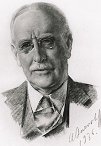|
C.
C. Burlingham, His Life and Century
1858-1959 New York's First Citizen
This book was "published by Hill and Wang, a division
of Farrar,
Straus & Giroux, and was awarded the Erwin N. Griswold
Prize by the Supreme Court Historical Society. It recounts
the life of a man of great influence, but little power. He
was a friend, however, and counselor to Franklin D. Roosevelt
and Fiorello La Guardia, and when he telephoned, they took
the call. He was not rich, but supported himself by practicing
maritime law, in which field his most famous case was representing
the White Star Line against claims for loss of life and property
in the sinking of the Titanic. He had much to do
with the shape and architecture of New York City, especially
bridges in and out of Manhattan. In addition, members of his
family suffered with mental ill health, and his daughter in
law became a disciple of Anna Freud, involving him indirectly,
and one time most directly, with the Freuds, father and daughter.
He was also a man of religious belief and helped to make St.
George's Episcopal Church in New York City one of the city's
outstanding churches, especially in its dealings with immigrants
to the city. He was a great meddler in politics and started
the judicial careers of two great judges: Benjamin N. Cardozo
and Learned Hand. He wrote letters with a breezy charm and
so his letters were saved. His life and century are an interesting,
amusing part of the country's history.
|



Now
Available
Online!
|



|
Madam
Secretary, Frances Perkins
(Boston:
Houghton, Mifflin, 1976)
ISBN 0-395-24293-2
Perkins, America's First Woman Cabinet Member, was U.S. Secretary
of Labor for Roosevelt from 1933 to 1945, and the "mother"
of Social Security. Few cabinet officers, after leaving office,
have had as such a continuing influence on our lives as she.
Her
career, for her day was quite extraordinary, and in the 1930s,
before World War II launched Eleanor Roosevelt to world-wide
fame, many in the United States considered Perkins the country's
outstanding woman. She graduated from Mount Holyoke College,
married, had a daughter, worked for the New York State labor
department and with Governor Al Smith's backing worked under
her maiden name. When she was sworn in as U. S. Secretary
of Labor under the name "Miss Perkins," with a sixteen-year
old daughter at her side, conservative Congressmen sputtered.
But she was the best qualified candidate for the job, and
the in-coming President, F. D. R., trusted her. She was strong
in her religious beliefs, and because a woman and religious,
male historians tend to brush her aside, apparently uncomfortable
with her gender and religion and uncertain how to gauge or
handle her influence. Her part in the country's social security
system is still not sufficiently celebrated.
The book is now out of print, but available in second-hand
copies through book stores. |
The
Damrosch Dynasty, America's First Family of Music
(Boston:
Houghton, Mifflin, 1983)
ISBN 0-395-34408-5
This is a book about a family of German immigrant musicians,
with emphasis on the family's social characteristics, the attitudes
and assumptions underlying its personal relations and its extraordinary
contribution to music in the United States. Indeed, no family
has contributed more to the development in this country of a
taste for classical music than the Damrosch-Mannes family. What
they accomplished, founding musical institutions such as the
Institute of Musical Art (later the Juilliard School), the Mannes
College of Music, the NBC Music Appreciation Hour, the New York
Symphony and the Oratorio Society of New York, is certain. Why
they accomplished so much is more speculative, and the book
probes their German and religious backgrounds, their experiences
with New York's rich, such as persuading Andrew Carnegie to
build Carnegie Hall, and with the poor and ordinary, such as
the People's Singing Classes.
They did not limit themselves to music, however, they also had
a role in science, for Leopold Damrosch Mannes, a first-class
musician, was also a co-inventor with another musician of the
first practical process for color photography. His wife, Evelyn
Sabin, was one of Martha Graham's dancers in the latter's first
troupe, the Graham Trio. His sister, Marya Mannes, wrote books
and articles on social, political, and artistic concerns. A
cousin, Helen Tee Van, painted murals for New York's Museum
of Natural History, while her husband went to China to bring
back a giant baby panda for the Bronx Zoo. All in all, the explosion
of talent in the family's first three generations was extraordinary,
and the book explores the reasons for it.
The book is now out of print, but available in second-hand copies
through book stores. |



|
|
|

